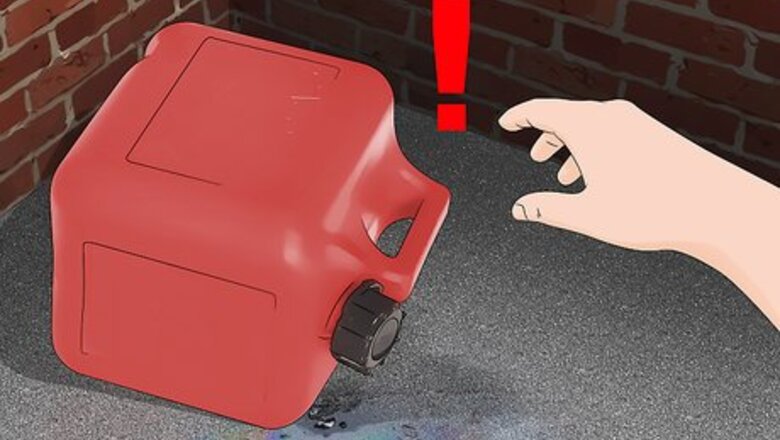
views
Containing the Spill
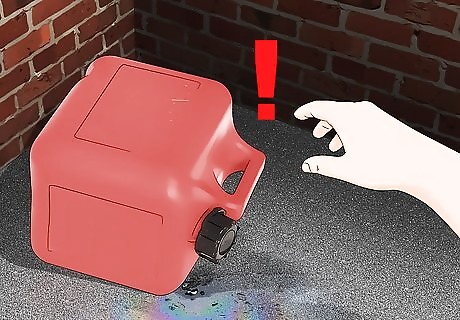
Stop the spill at the source. First thing’s first—before you get too worried about how to clean a gasoline spill, you’ll want keep it from getting any worse. If you’ve accidentally knocked over a fuel tank or container, return it to an upright position immediately and secure the lid or cap over the opening. If the spill originated from a pump, make sure that it’s shut off and that the nozzle has been replaced. Even a small gasoline spill can quickly become dangerous. Try to react as quickly as you can. Always pay attention when you smell gasoline fumes. Strange odors could indicate the presence of a spill, even if you’re not aware of it. Be sure to let an attendant know about sizable spills and leaks that occur at filling stations.
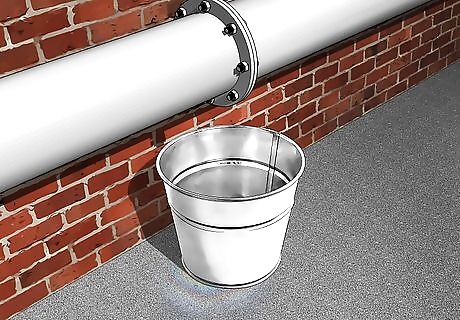
Catch gasoline that’s actively leaking. Assuming the spill is the result of an ongoing leak, it may not be possible to stop it immediately. In this case, look for any sort of large container you can place beneath the leak. This will keep it from coming into contact with other surfaces that are much more difficult to clean. Make sure the container you use won’t leak or overflow. If you’re at home, grab a bucket, paint roller tray or washtub.
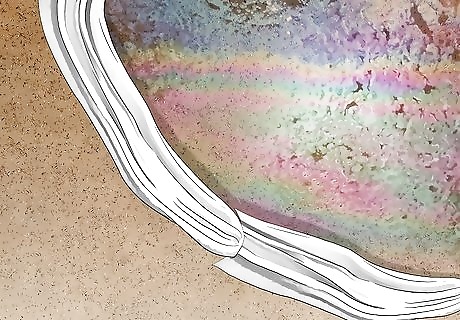
Put down a barrier of some kind. To prevent the spill from spreading to a larger area, throw down some object or group of objects that can stop or slow its movement. An obvious choice is a beach towel, but a piece of lumber or a few heavy boxes may also work (keep in mind that whatever you use will likely have to be thrown away). Position the barriers closely around the perimeter of the spill. Be especially vigilant in preventing the spill from reaching electrical equipment or objects that produce or give off heat, such as stoves, space heaters and electrical outlets. Use a plastic tarp to cover and protect objects that are vulnerable to damage.
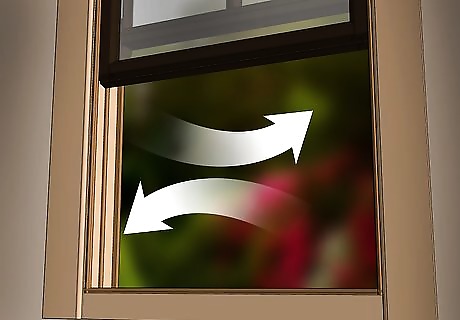
Ventilate the affected area. Gasoline emits powerful fumes that can be very harmful to inhale. Open all nearby windows and doors to get air circulating through throughout the room. If the spill occurs somewhere inside with no windows, turn on the ceiling fan or air conditioning. Exposure to fumes may cause dizziness, lightheadedness, shortness of breath or disorientation. Gas fumes are also a severe fire hazard. Avoid doing anything that may lead to an accidental ignition.
Soaking Up the Gasoline
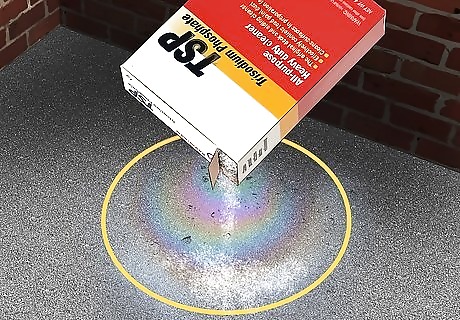
Cover the spill with a dry absorbent agent. Ideally, you should choose a substance like clay cat litter or trisodium phosphate (commonly packaged as the cleaning powder "T.S.P."), as these are useful for neutralizing odors as well as wicking up moisture. However, other items like sawdust, sand, straw or even dirt will also be effective. Search the area and use whatever happens to be on hand—speed is the key here. Apply the absorbent agent liberally. It may take quite a bit to soak up all of the standing gasoline. If you’re near the kitchen, you could also use baking soda, cornstarch or flour. Some companies now manufacture special sorbent pads that can be used in the event of a sudden accident. The synthetic materials these pads are constructed from makes them a very efficient way of dealing with petroleum-based spills.
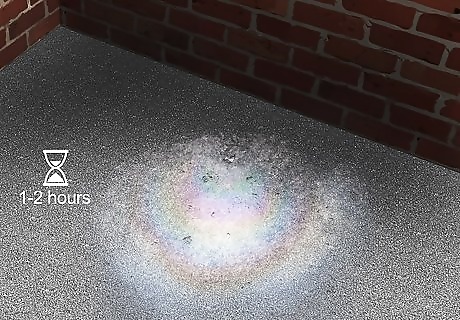
Let the absorbent agent sit on the spill for 1-2 hours. This will give it time to soak up as much gasoline as possible. While it’s working, be sure to keep the immediate vicinity clear and well-ventilated. If time is a factor for any reason, allow the material to remain over the spill for at least half an hour. Absorbent agents work by separating the gasoline into smaller and smaller droplets, then binding with them to turn into a gritty paste can be lifted away easier than a liquid.
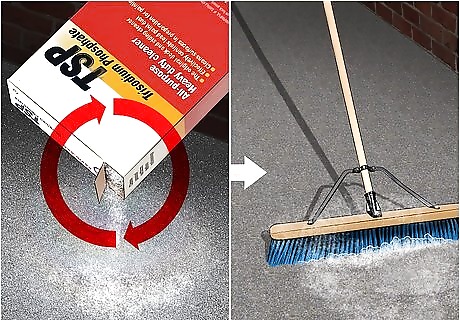
Reapply the substance as needed. For larger spills, it may be necessary to clear away clumps of gas-soaked dry material in order to make room for more. Sweep or scoop the saturated material into a trash bag or bucket, then shake more onto the wet spots underneath. Leave the fresh absorbent agent to sit for half an hour or more. Repeat this process until most of the gasoline has dissipated. You may not be able to get up every last trace of gasoline. What you can’t remove you’ll have to let evaporate, then scrub the resulting residue clean.
Disposing of the Gasoline
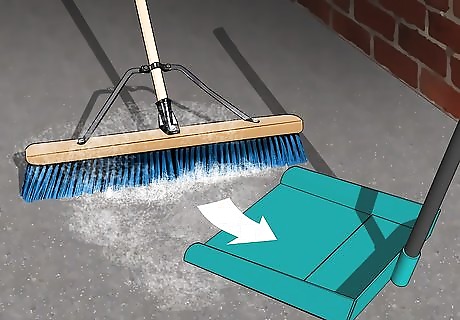
Sweep the absorbed gasoline into a separate container. Using a broom and dust pan, collect the gasoline and dry material from the affected surface. Dump the mess into a trash can, garbage bag or similar receptacle. If the spill occurred indoors, move the container outside to prevent fumes from building up in the confined space. Don’t cover or seal the container holding the gasoline. Trapped fumes can build up inside, leading to an increased risk of fire or explosion. Be prepared to deep clean or throw out whatever container you use.
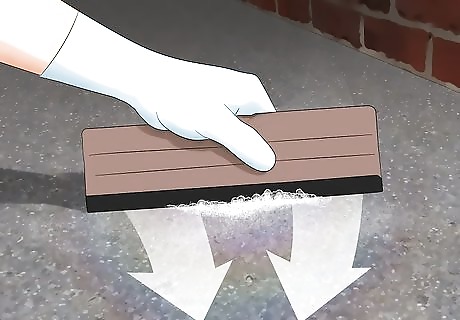
Scrape up any remaining gasoline. Once the worst of the mess is up, turn your attention to the surface affected by the spill. The best way to do this is with a squeegee or plastic scraper. Transfer the last of the gasoline into a plastic bag and leave it with the rest of the materials for disposal. For spills on carpet or upholstery, vacuum up the lingering bits of gasoline and dry material before giving the fabric a thorough cleaning.
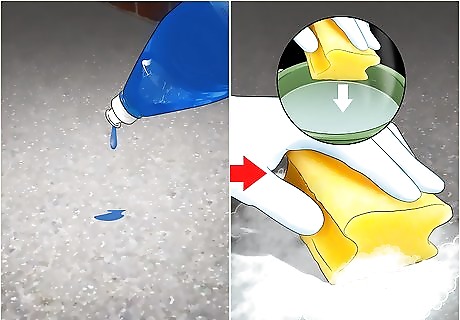
Clean the area thoroughly. Wet a washcloth or sponge with hot water. Apply a liquid dish soap directly to the site of the spill and work it in until it forms a thick, foamy lather. Scrub the stain vigorously to coax it out, then flush the area with fresh water and pat it dry with a towel. If you’re worried about causing water damage to the surface you’re attempting to clean, try sprinkling it with a powdered dish detergent or dry solvent instead. Afterwards, you can mop up the cleaner with a damp cloth. After you’re finished cleaning, wash your hands and any other parts of your body that may have come into contact with gasoline or gas fumes.
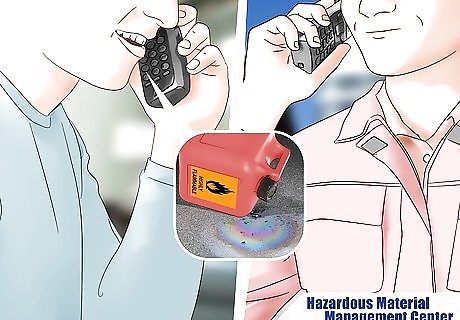
Contact your local hazardous material management center for assistance. Place a call to the fire department or pollution control agency to inform them of the spill and ask for instruction on how to proceed. In most cases, they’ll dispatch someone to deal with flammable substances. Otherwise, they can advise you on how to safely dispose of the mess yourself. Never throw gasoline away in a standard trash receptacle. Toxic and flammable materials require special disposal methods. Gasoline can still present a fire hazard even when it’s been absorbed into another dry material.




















Comments
0 comment